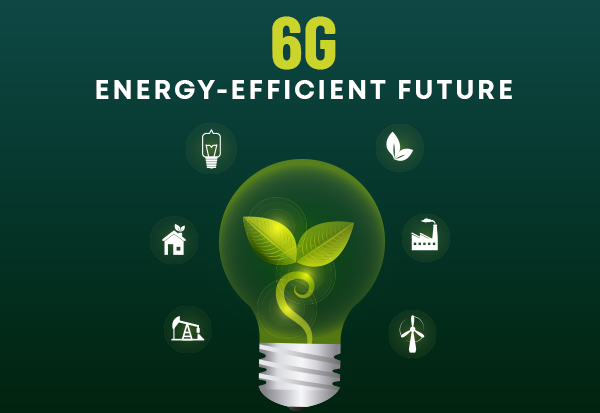Energy-Efficient Design and Power Management: Keeping 6G Green and Lean
Why Energy Efficiency Matters in 6G?
6G is set to connect billions of devices—think IoT sensors, wearables, and smart city gadgets – all humming along at terahertz speeds with edge computing smarts. But here’s the catch: more devices and higher frequencies could turn this tech dream into an energy nightmare. 5G already guzzles power—base stations alone account for about 1% of global electricity use, per a 2023 Huawei report. Scale that up to 6G’s ambitions, and we’re talking a serious carbon footprint unless we get clever.
Energy efficiency isn’t just about saving the planet (though that’s a big win)—it’s about making 6G practical. Tiny IoT nodes can’t lug around giant batteries, and wearables need to last all day. 6G’s got to be lean and green to deliver on its promise. So, how does it pull this off?
How 6G Tackles the Power Puzzle?
6G isn’t just faster—it’s smarter about sipping power instead of chugging it. Here’s the playbook:
Low-Power Edge Computing:
By processing data locally (like we covered last time), 6G cuts the energy spent shipping bits to the cloud. Qualcomm’s 2025 6G chip prototype slashed power use by 30% with edge AI, letting devices think hard without burning out.
Dynamic Power Scaling:
6G devices adjust their juice on the fly-cranking up for heavy tasks like holographic calls, then chilling out when idle. Think of it like a dimmer switch for your network. A 2024 Intel trial showed this trick dropping idle power draw by 40% in THz setups.
Energy Harvesting Tricks:
Tiny antennas pull power from ambient sources—radio waves, sunlight, even vibrations. Researchers at MIT’s 2025 6G Summit demoed an IoT sensor that runs entirely on harvested RF energy—no battery needed.
AI-Driven Optimization:
AI doesn’t just predict traffic—it fine-tunes power use. Ericsson’s 2025 6G pilot used AI to cut network energy waste by 25%, dynamically shutting off unused nodes like a smart thermostat.
Use Cases That Prove It Works
Energy-efficient 6G isn’t just theory—it’s already sparking real-world wins:
Wearables That Last: Samsung’s 2025 Galaxy Watch prototype used 6G edge processing and power scaling to stretch battery life to 72 hours—perfect for health trackers crunching data all day.
Smart Cities That Save: Singapore’s 2024 Smart Nation trial paired 6G IoT sensors with energy harvesting, powering traffic lights and air quality monitors without plugging in. 6G could make entire cities self-sustaining.
Massive IoT Without the Mess: A 2025 Nokia pilot in rural Finland deployed 10,000 6G-connected sensors for precision farming—each sipping micro-watts via harvested energy, keeping costs and emissions low.
Green Industrial Hubs: Bosch’s 2025 factory test used 6G’s dynamic scaling to sync robots efficiently, cutting energy use by 20% compared to 5G setups. Think lean manufacturing on steroids.
Standards Embedded Engineers Should Explore
Ready to build the green side of 6G? These standards and tools are your starting point:
- 3GPP Release 20:Due in 2026, it’s shaping up to include power-saving specs for 6G—hot off the 2025 drafts.
- ETSI ENI (Experiential Networked Intelligence): Updated in 2024, it’s all about AI-driven energy optimization.
- IEEE 802.11bb: Li-Fi standards for light-based, low-power comms—6G’s eco-friendly cousin.
- GreenTouch Consortium: Research on energy-efficient networks—check their 2025 whitepaper for 6G tips.
Bonus: Play with NS-3 ’s energy modules (open-source simulator) to test power-saving designs. It’s a low-risk way to tweak 6G efficiency now.
Why Engineers Should Jump In?
6G’s energy game is a playground for embedded engineers. Designing low-power chips, coding AI for efficiency, or hacking energy harvesting puts you at the heart of a sustainable tech revolution. With IoT exploding—Gartner predicts 25 billion devices by 2030—this is your chance to make 6G both powerful and practical.
Start now. Simulate a power-efficient node, dig into 3GPP’s drafts, or brainstorm a harvesting hack. Can 6G save the planet while connecting it? You tell us—drop your ideas below.





